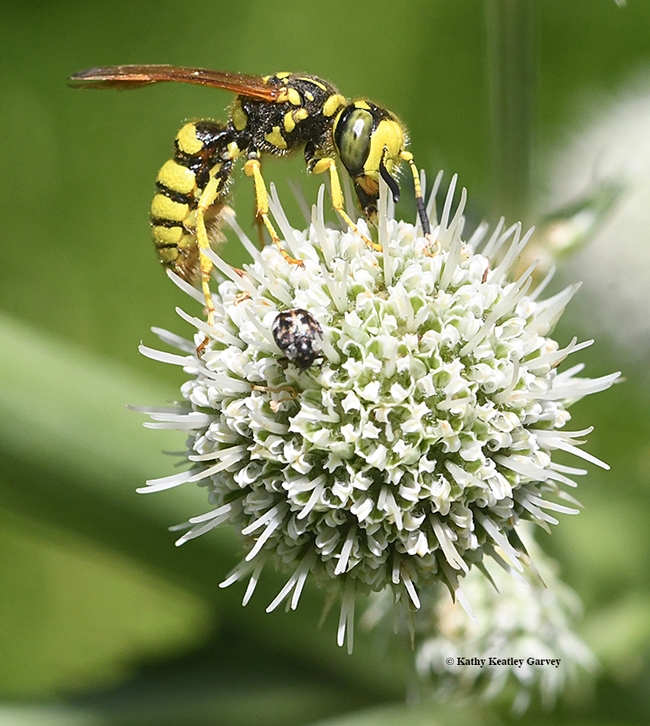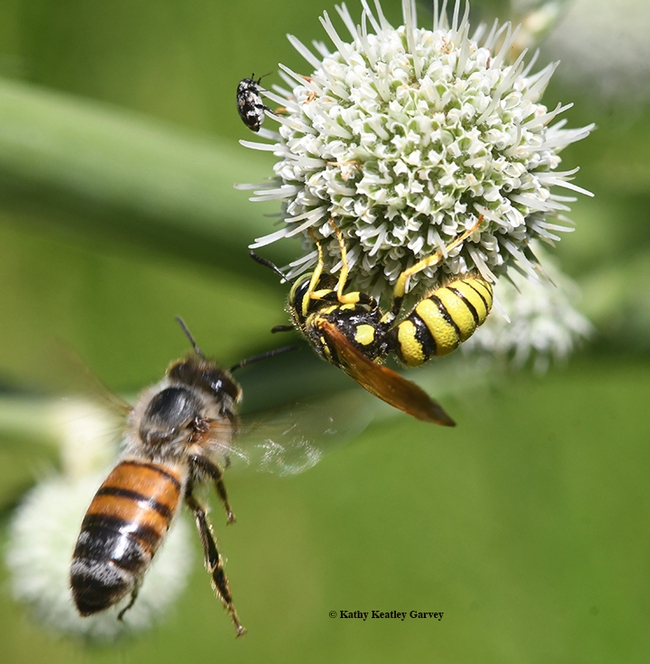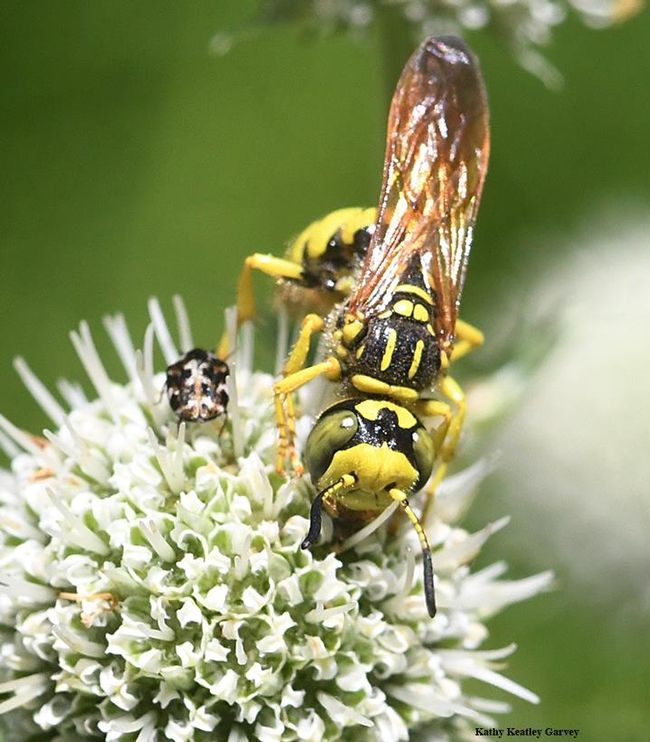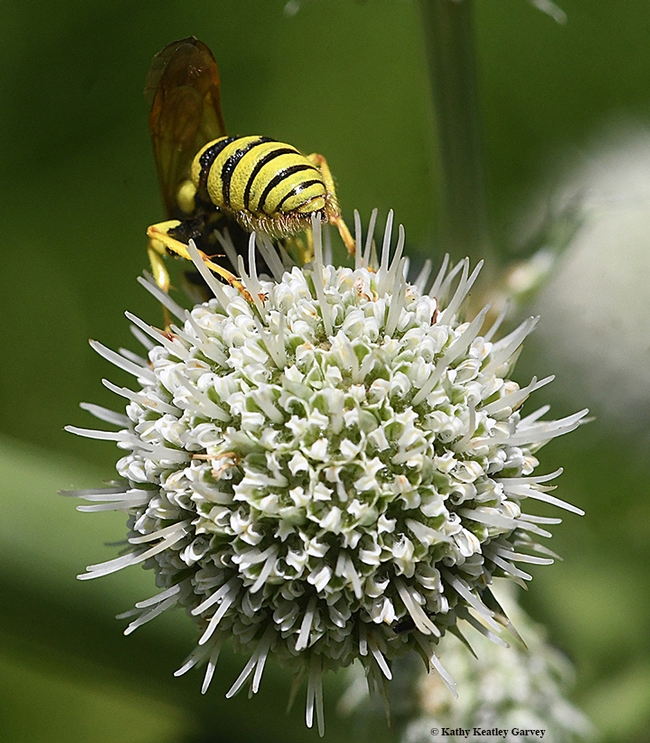Irish novelist Margaret Wolfe Hungerford was right.
In Molly Bawn, published in 1878, Hungerford wrote "Beauty is in the eye of the beholder," meaning that our perception of beauty is subjective.
Beauty is also in the eye of the bee-holder, that is, a predator that "holds" bees.
We recently spotted a crabronid wasp (genus Philanthus) foraging on a pineapple sea lily (Eryngium horridum).
This solitary, digger wasp is better known by its common name, beewolf. That's because it preys on bees, including honey bees. The wasp stings the bee with its powerful venom, paralyzing it. Then it flies off with the bee (alive) to its underground nests where it provisions its cell burrows for its young.
"They are notable in stinging their prey in a membranous location on the ventral surface where the venom quickly paralyzes major voluntary muscles, yet does not kill the prey," according to Wikipedia. "The prey may attempt to sting in return, but it is always grabbed in such a way that only well-armored portions of the beewolf's body are presented. The beewolf carries the prey back to a tunnel, but usually only stores it temporarily, until it is later used to provision a cell burrow, where an egg is laid."
As we watched the beewolves (as identified by Lynn Kimsey, director of the Bohart Museum of Entomology and professor of entomology at the University of California Davis) we also saw other critters foraging on the pineapple sea lily: honey bees and assorted mordellid beetles.
Take a look the beewolf. Note the bold, black stripes on the abdomen; the brilliant yellow on the head and thorax; and those sea-green eyes.
It's a predator, but predators, like prey, can be strikingly beautiful. Beauty is in the eye of the bee-holder.
Attached Images:

A crabronid wasp or beewolf foraging on a pineapple sea lily (Eryngium horridum) at the Morningsun Herb Farm, Vacaville, Calif. (Photo by Kathy Keatley Garvey)

Beewolves prey on honey bees, but in this case, both the beewolf and the honey bee are intent on foraging for nectar. At the top is a third insect: a mordellid beetle. (Photo by Kathy Keatley Garvey)

Well, hello there! The beewolf eyes the camera. (Photo by Kathy Keatley Garvey)

See ya! The beewolf turns away from the photographer. (Photo by Kathy Keatley Garvey)